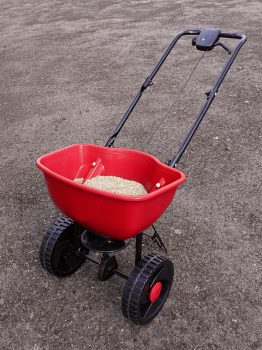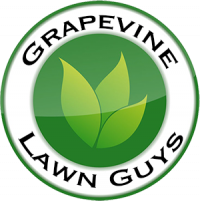When summer ends, it doesn’t mean that lawn care ends as well. Fall is the best time for lawn care with winter fast approaching. During autumn, there is only occasional rainfall, and the temperature is cooler, which makes for the perfect time to prepare your lawn for the coming spring. At this time of the year, it is also easier to remove perennial weeds.
At the same time, the soil takes on less damage from aerification, or detaching equipment, than in the winter when it begins to retain moisture. Many homeowners believe their lawn needs less care during the fall, but the opposite is true. In fall, the grass absorbs plenty of moisture, energy, and nutrients for the winter ahead, meaning it needs special attention to reap the reward of a lush, healthy lawn.
Lawn Care Tips During Autumn
Fertilizer
Experts agree autumn is the perfect time for fertilizing your lawn, because the grass leaves grow slower due to the weather turning cool and the grassroots and rhizomes overgrow. When you apply fertilizers in fall, you can provide the grass with essential nutrients needed to preserve its health.
Overseed
Fall is the perfect time to overseed, or restore your existing lawn due to the cooler weather and the abundant rainfall. When you do this in fall, it gives the grass seed enough time to sprout for the next for 4 to 6 weeks. The season provides the new grass time to establish before the cold weather comes.
Aerification
Lawns that grew in heavy clay soil or compacted soil can benefit if you aerified them during the fall. Use an aerifier, which is a machine capable of removing soil plugs from your lawn and deposits them on the surface. Aerification offers two benefits – first, moisture, air, and nutrients enter the grass’s root zone thanks to the holes created by aerifying the lawn.
Secondly, those plugs left on the lawn surface will eventually break down. They will then improve the soil on your lawn. The best time to perform aerification is early to mid-fall. By doing this, you can give a few weeks for the plugs of soil to break up and improve the surface soil before the freezing weather sets in during winter.
Dethatching
Dethatching involves removing dried roots and grass clippings on top of the soil, the top growth of the grass, and in-between roots. This treatment is best done in the cool temperatures of autumn. Using a dethatching machine is essential in removing a thatch that’s more than ¾” thick. The machine separates the layer of thatch using thick tines, rakes them up, and removes them. After dethatching, make sure to dress up the lawn with a layer of compost or topsoil to add more microorganisms.
Mowing
During fall, mow your lawn as the grass blades continue to grow. Set the mower to around ½” to 1” lower than the setting you would use in summer. Mowing regularly is essential as it will help avoid any perennial weeds to set up seeds to germinate and grow when the next spring comes. With these fall treatments, you can ensure that your lawn will be healthy throughout winter.

